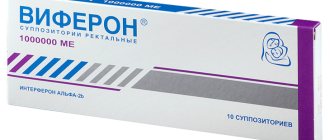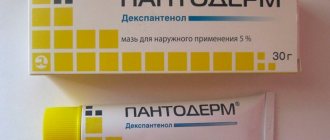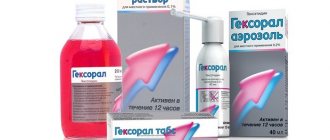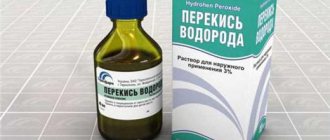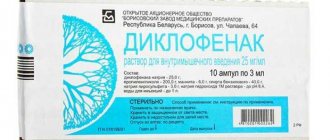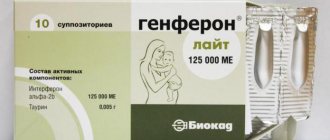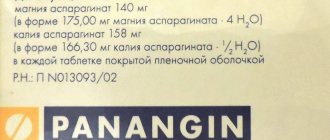Metrogyl Gel is a modern drug with antiprotozoal and antibacterial effects for topical use. The product is used primarily to eliminate bacterial lesions of the epidermis.
The drug is a gel for external use, dispensed in 30 and 50 g quantities in laminated plastic or aluminum tubes with a screw cap.
The medication is available in the form of a homogeneous substance with a gel consistency. The color of the medication can vary from transparent, white to yellowish.
There are several varieties of this remedy:
- Metrogyl Denta is used in dentistry
- Metrogyl vaginal gel is used to eliminate infections in gynecology.
The drug is dispensed without presenting a prescription from the attending physician. The shelf life of the product is 3 years. The instructions recommend storing Metrogyl Gel at an ambient temperature of no more than 25 degrees Celsius. The cost of the medicine at the pharmacy varies from 100 to 220 rubles per tube containing 30 g.
Composition and description of Metrogyl solution
Metrogyl in the form of a solution for intravenous administration is a colorless or yellowish liquid substance.
The effect of using the drug is determined by the presence in the composition:
- Metronidazole (active substance) 5 mg, part of the group of vital and essential drugs.
- Sodium chloride : has a detoxifying effect and regulates water and electrolyte balance.
- monohydrate : promotes energy metabolism.
- Sodium hydrogen phosphate : improves the removal of pathological microorganisms from the body.
- Water.
Metrogyl is available in 2 forms:
- in ampoules of 20 ml, 5 pcs. in cardboard packaging intended for single injections.
- in glass bottles of 100 ml and 500 ml are used as a product for drip systems.
Directions for use and dosage
The instructions for use of Metrogyl describe in detail all the features of using the drug, as well as its dosage for adults and adolescents. Before starting therapy, you should definitely consult with your doctor; he will make the correct diagnosis and prescribe the necessary dose to prevent infection and kill bacteria. The nuances of taking various dosage forms of an antimicrobial agent are described below.
Tablet dosage
According to the instructions, the pills are taken during meals, swallowed whole. As a rule, the dosage and duration of the treatment process is determined individually, in each individual case. An approximate scheme for using the medication in tablets looks like this:
- trichomoniasis: 1 tablet three times a day (course of therapy – a week);
- bacterial anaerobic infection: 1-2 pills, two to three doses per day (duration – 7 days);
- giardiasis: adults – 1 gram per day (divided into 2 doses), children over 13 years old – 400 mg per day for 2 doses (course of therapy – 5 days);
- vaginitis: take 400 mg twice a day for a week;
- amebiasis: drink 400 mg three times a day, children over 13 years old - 40 mg per day for 3 times (treatment - 8-10 days).
Metrogyl intravenously
When the infectious disease is severe or it is not possible to take a course of pills, the solution is administered intravenously. As a rule, adult patients and adolescents (from 12 years old) are given a dose of 500-1000 mg by drip. Then the dosage is 500 mg every 8 hours. After several successful droppers, a jet injection of the drug is performed. The maximum amount of solution per dose is 4000 mg. Duration of treatment is a week.
Metrogyl for external use
The medication in the form of a colorless or yellowish gel is applied to clean, dry skin in a thin layer. This procedure is carried out twice a day (morning and evening). The average duration of therapeutic procedures is from 3 to 4 months, but for each individual case this period is determined individually. If the treatment is carried out correctly, the gel gives positive results 3-4 weeks after the start of application.
Mechanism of action and results of using the drug
Once inside, by interacting with their DNA and stopping the division processes, metronidazole prevents the proliferation of infectious bacteria and pathogens.
The bactericidal effect of the drug helps to cleanse inflammatory foci from the pathogenic effects of microbes, while simultaneously providing a detoxification effect due to the content of sodium chloride and sodium hydrogen phosphate.
Metrogyl has a positive effect on the restoration of affected cells and tissues of the body, contributing to the rapid recovery of the patient.
During courses of UV irradiation, it improves the sensitization of the tumor, reducing the manifestations of lack of air and impaired blood supply in its cells. The drug is not effective in the treatment of aerobic microorganisms and facultative anaerobes, however, the simultaneous use of antibiotics is allowed, which leads to an increased effect of these drugs on the body.
The solution has the following properties:
- Antiprotozoal (against protozoan parasites).
Metrogyl solution has antiprotozoal properties.
- Antimicrobial.
- Anti-inflammatory.
- Sensitizing (for benign and some malignant tumors).
Metrogyl reaches maximum concentration in the body approximately 1 hour after administration, and the therapeutic effect lasts for 8 hours. The substances of the drug are excreted after 7-8 hours mainly by the kidneys with urine and intestines as part of feces. In the presence of alcohol intoxication and liver damage, the elimination of the substance slows down by 2 times.
Effect of the drug
- The drug has the ability to suppress the growth and reproduction of microorganisms by blocking the synthesis of their DNA. When a substance enters a cell, intracellular transport proteinases of microorganisms interact with the 5-nitro group of metronidazole, after which it is restored and becomes able to influence the DNA molecules of that cell.
- Effective against clostridia, eubacteria, gardnerella, streptococci and peptococci, trichomonas, fusobacteria, bacteroides and anaerobes. It has a pronounced effect on protozoa - dysenteric amoebas, Trichomonas and Giardia. It has both bactericidal and bacteriostatic effects.
- With topical application of ointments with metronidazole, it is also possible to get rid of acne. The drug has an antioxidant effect and suppresses the activity of free oxygen radicals, which can damage the epidermis and cause acne. Thanks to neutrophils, the drug reduces the production of reactive oxygen species, reactive radicals and hydrogen peroxide.
Indications for use
The drug is prescribed to combat infections caused by the active reproduction of protozoan parasites:
- abscesses of the liver and intestines (purulent inflammation due to the spread of amoebic bacteria);
- trichomoniasis (invasive disease of the genitourinary system);
- giardiasis (a disease of the small intestine affected by Giardia);
- giardiasis;
- trichomonas inflammation of the female and male pelvic organs;
- cutaneous leishmaniasis, characterized by skin ulcers caused by Leishmania (protozoan parasites).
Metrogyl in the form of a solution for intravenous administration is prescribed for diseases that progress due to pathogenic Bacteroides:
- Infectious lesions of cartilage and bones, as well as the nervous system: purulent inflammation of the brain, meningitis, diseases of the endocardium of the heart of bacterial etiology, pneumonia, empyema (accumulation of pus in the cavity of an organ or body), abscess of the air respiratory system.
- Infections of the hip organs and abdomen: endometritis (inflammation of the uterus), endomyometritis (damage to the lining of the uterus), abscesses in the reproductive system.
- Skin infections and soft tissue inflammation.
And also if available:
- Pseudomembranous colitis (arising from the use of antibiotics).
- Ulcerative inflammation of the intestines.
- Alcohol addiction.
- Course of irradiation for patients with tumors.
The drug is also prescribed to prevent infection of organs or tissues after surgery.
What is Metrogyl gel
This is a synthetic medicine that has a wide spectrum of antiprotozoal and antimicrobial effects. Metrogyl ointment contains the substance metronidazole, which has a detrimental effect on protozoan microorganisms and anaerobic infections. The medication is prescribed after testing and determining the causative agent of the pathology. There are several dosage forms of the drug:
- injection;
- gel;
- pills;
Compound
The main active component of Metrogil is metronidazole; it has properties to effectively combat a large number of pathogenic bacteria that develop and multiply during inflammatory processes on the skin and blockage of the sebaceous glands. The components of the drug penetrate the DNA of viruses and destroy the structure of cells from the inside. The auxiliary components of Metrogyl gel are:
- carbomer 940;
- purified water;
- sodium hydroxide;
- edetate disodium.
Instructions for using the dropper
Metrogyl drip administration occurs mainly in hospital settings and in the treatment of complex stages of diseases. Home drips prescribed by a doctor are carried out in a sterile room under the supervision of an experienced nurse.
In case of severe intoxication and serious condition of the patient, a dosage of 1 g is prescribed. The patient is placed on a couch or bed in a supine position and the solution is injected for about 30 minutes. According to indications, the course of treatment averages a week or more. In the absence of side effects and complications, the doctor prescribes a jet injection of Metrogyl through a syringe needle.
According to the standard scheme, a dropper is administered every 8 hours, 0.5 g of the substance in case of severe intoxication and inflammation.
During radiation treatment, a drip system is installed for 7-14 days before each irradiation. The maximum daily dosage in this case should not exceed 10 g. The recommended dose for the entire course of sessions is about 65 g.
conclusions
- Complex treatment of respiratory diseases using a nebulizer allows you to quickly and effectively cope with the disease.
- For treatment, mucolytics and mucoregulators, bronchodilators, glucocorticoids, antibiotics, saline and alkaline solutions are used.
- During treatment, you should scrupulously follow the recommended dosages of drugs.
- It is prohibited to use medications if there are contraindications. We also recommend that you read Adrenaline for inhalation for children in this material.
Recommended Dosages
Dosage table:
| Age | Adults + teenagers from 13 years old. | Children under 12 years old. |
| Dosage for treatment | 0.5-1 g. | The calculation is based on body weight: 7.5 mg per kg. |
| Dosage for the prevention of infection after and before surgery | 500 mg once every 8 hours | up to 500 mg 1 time every 8 hours |
| Dosage 1 hour before the radiation session | The calculation is made depending on:
| Likewise |
The adult dosage of the drug per day should not exceed 4 g. For children, the solution is used rarely and under the strict supervision of a doctor.
Indications for use
Despite the fact that the medication in question is capable of inhibiting the vital activity of many pathogenic microorganisms, it does not belong to the category of antibacterial drugs. The active component contained in the drug is a bacteriostatic substance and is capable of providing anti-inflammatory, antioxidant and bactericidal effects. Such a wide range of effects allows the use of an external agent for the treatment of various pathologies caused by microbes sensitive to metronidazole.
Metrogyl vaginal gel will be effective in the treatment of the following ailments:
- vulvovaginitis;
- urogenital trichomoniasis;
- vaginal candidiasis;
- amoebiasis;
- vaginal dysbiosis;
- gardnerellosis.
Using the drug in gel form for the treatment of sexually transmitted infections in women, it is possible to achieve higher bioavailability and penetration of the active substance into the focus of the inflammatory process. Thanks to this, the necessary therapeutic effect is observed even when using a minimal amount of the drug.
Contraindications
Metrogyl is strictly not allowed to be prescribed in the presence of the following factors and conditions:
- Allergy to constituent components and nitroimidazole.
- Early pregnancy (1st trimester).
- Lactation period.
- Organic lesions of the central nervous system.
- Blood diseases (anemia, hemophilia, leukemia).
- Liver diseases and kidney failure.
It is prohibited to consume alcoholic beverages during the course of treatment, due to the development of complications and aggravation of intoxication symptoms.
Analogs
There are many drugs on the pharmaceutical market that have similar effects to Metrogyl. These are various medications that have both combined formulations and those similar to Metrogyl. Medicines often differ only in name and cost. Analogues of Metronidazole are produced both in the form of a solution and in other pharmacological forms. These include:
- Arilyn;
- Camesol;
- Klion;
- Medazol;
- Metrovit.
You should not independently replace Metrogyl treatment prescribed by your doctor with its analogues. It is important to first consult with a specialist, and only after receiving confirmation can you purchase certain analogue options. It is important to remember that self-medication of a child without notifying a specialist can only harm his health.
Similar articles
Tonsilgon for inhalation for colds for children and adults
Carrying out inhalations with calendula-based preparations
Cedovix for inhalation
Gentamicin and Amikacin for inhalation with a nebulizer
( 1 ratings, average: 5.00 out of 5)
Inhalations for bronchial asthma with clenil UDV
Previous article
Compressor inhaler Microlife neb 100
Next article
Advertisements
Possible adverse reactions
Metrogyl solution for intravenous administration, if used incorrectly, causes adverse reactions and symptoms:
- Drying of the mucous membrane.
- Vomiting.
- Lack of interest in food.
- Aching painful sensations in the gastrointestinal tract.
- Presence of a metallic taste in the mouth.
Side effects also occur:
- In the digestive system , causing symptoms typical for disorders (gas formation, constipation, and so on).
- In the nervous system : pain in the head area, loss of sense of coordination, feeling of irritation, feeling of lethargy, convulsions, neuropathic symptoms.
- On the skin and body in the form of allergies: rash, irritation and redness.
- In the urinary system : dysuria (impaired urination accompanied by pain), cystitis, urinary incontinence, candidiasis.
- At the injection sites : thrombophlebitis (painful inflammation of the veins with characteristic swelling and redness).
Also in rare cases, the following may occur:
- Neutropenia is a decrease in neutrophils in the blood.
- Leukopenia is a decrease in leukocytes in the blood.
- Flattening of the T wave (one of the indicators in the cardiogram) in ECG analyses, which is characterized by a decrease in its amplitude.
Adequate and timely treatment under the strict supervision of an experienced physician significantly minimizes the risk of adverse reactions.
Side effects from Metrogyl inhalations in children and adults
Inhalation of Metrogyl in children and adults may be accompanied by undesirable reactions:
- unpleasant, bitter or metallic taste;
- dry mouth;
- redness of the tongue, gums;
- sore throat, coughing;
- nausea and vomiting;
- decreased appetite;
- headache, dizziness;
- nasal congestion;
- skin rashes, itching.
Nausea and vomiting
Prolonged and uncontrolled use of the drug, self-medication can lead to:
- diarrhea or constipation, intestinal colic;
- disruption of the pancreas, liver, kidneys;
- gait instability, loss of coordination of movements;
- confusion;
- increased irritability, depressive reactions;
- severe weakness;
- sleep disturbance;
- joint pain;
- painful urge to urinate;
- tingling and numbness in the legs;
- development of candidiasis (fungal infection) of the oral cavity.
Overdose
Incorrect dosage leads to the development of a number of symptoms:
- Nausea and vomiting.
- Ataxia is a disorder of muscle motor function.
- Cramps.
- Peripheral neuropathy, in which the nerve endings of the brain and spinal cord are damaged.
There is no clear antidote for the drug; therapy for such manifestations is aimed at reducing and removing symptoms.
Side effects possible after using the drug composition
If the rules for inhalation are not followed, possible side effects.
Side effects include:
- dyspeptic disorder (loose stools, colic, nausea);
- attacks of pancreatitis;
- feeling of constant thirst (dry mouth);
- glossitis, stomatitis;
- difficult bowel movements;
- insomnia;
- convulsions;
- redness of the epidermis;
- ataxia;
- depression, neuropathy.
Interaction with other drugs
Metrogyl solution for intravenous administration is used with caution, observing the following nuances:
- The medicine should not be taken with other medications to avoid unpredictable consequences.
- The drug enhances the effect of drugs that prevent thrombus formation (coagulants) and increases the time for determining indicators of the intensity of blood clotting processes.
- Metrogyl should not be taken together with ethanol-containing substances. When treating alcoholism, the solution cannot be used together with disulfiram, which is also widely used for the treatment of alcohol dependence. If this condition is not met, various types of neurological disorders occur.
- The combined use of cimetidine (an H2 receptor blocker designed to reduce the level of hydrochloric acid in the stomach) and metronidazole suppresses the metabolism of the latter and provokes an increase in the concentration of the substance in the blood and the risk of developing side complications.
- Taking medications intended to suppress epileptic reactions together with Metrogyl accelerates the elimination of the latter, as a result of which the effect of the solution is significantly reduced.
- When phenytoin and Metrogyl are used together, a decrease in clearance (an indicator of the rate of cleansing of biological tissues and body fluids) and an increase in the concentration of the first substance are observed, and symptoms of a phenytoin overdose may appear.
- With the simultaneous use of lithium preparations (psychotropic drugs), the concentration of metronidazole in the body increases, which leads to intoxication, which is accompanied by pallor, vomiting, diarrhea and pain), as well as to impaired renal function.
- When preventing surgical complications with Metrogyl and general treatment, you cannot use drugs intended to relax skeletal muscles and eliminate convulsive syndrome.
- The combined use of sulfonamides (antimicrobial drugs) and metronidazole increases the antibacterial effect of the latter.
Metrogyl in combination with Amoxicillin reduces the development of body resistance to the active substance metronidazole, and prevents the proliferation of bacteria of the Helicobacter pylori species.
special instructions
It is not recommended to combine Metrogyl with amoxicillin in patients under 18 years of age.
Long-term therapy requires constant monitoring of the blood picture.
If the patient develops leukopenia, continuation of therapy depends on whether there is a risk of an infectious process.
Therapy should be discontinued if the patient develops dizziness, ataxia and other symptoms indicating a deterioration in neurological status.
Under the influence of the drug, immobilization of treponema may occur, which leads to a false-positive Nelson test.
During treatment, the urine turns dark.
Do not allow the gel to get into your eyes. If this happens, you need to rinse your eyes with warm water.
The Metrogyl dropper in gynecology is used only as prescribed by the attending physician.
In cosmetology, Metrogyl gel for the face is used to treat acne and other skin lesions. You can use it on your face only on the recommendation of a specialist.
You should not drink alcohol while using Metrogyl, as this can lead to the development of a disulfiram-like reaction, manifested in the form of spastic abdominal pain, vomiting, nausea, headache, and sudden flushing of the face.
The simultaneous use of Metrogyl with amoxicillin is not recommended for patients under the age of 18 years.
During long-term therapy, it is advisable to monitor peripheral blood counts.
If ataxia, dizziness or any other deterioration in neurological status occurs, therapy should be discontinued.
During treatment of trichomonas vaginitis in women and trichomonas urethritis in men, you need to abstain from sexual activity and simultaneously treat sexual partners. During menstruation, treatment should not be interrupted. At the end of the course, control tests must be carried out during three consecutive cycles before and after menstruation.
After completing treatment for giardiasis, if symptoms persist, after 3-4 weeks it is necessary to conduct 3 stool tests at intervals of several days (in some successfully treated patients, lactose intolerance caused by the invasion can persist for a long time, resembling the symptoms of giardiasis).
Avoid contact of vaginal and external gel with the eyes. In case of accidental contact, they should be washed immediately with plenty of water.
Features of application
When using Metrogyl as a solution for intravenous administration, it is necessary to take into account some application features:
- The drug should not be used during early pregnancy. Administration of the solution in the 2nd and 3rd trimester is allowed in the presence of a complex stage of the disease and only if the risk of infection is higher than the risk from taking the medication in relation to the development of the child.
- Metrogyl should not be taken during breastfeeding. If necessary, it is recommended to stop breastfeeding.
- If motor functions of the body decrease, you should stop taking the drug.
- The use of metronidazole in combination with amoxicillin is not recommended for people under 18 years of age.
- The entire stage of treatment should take place under the supervision of a doctor who monitors blood test results and the overall dynamics of therapy.
- If leukopenia is detected, treatment with Metrogyl should be discontinued due to the possible development of infection.
- Particular attention should be paid to peripheral blood parameters to prevent complications and adverse reactions.
- When treating vaginal bacterial pathologies, sexual activity is not allowed due to possible infection of the partner. Menstruation days are not considered a reason to stop administration.
- After treatment for giardiasis and other bacterial intestinal infections, it is recommended to undergo several stool tests with a break of 3-5 days to avoid re-infection.
- In rare cases, Metrogyl causes a false positive test for syphilis.
- During the course of treatment, the drug may cause darkening of the urine.
Uncontrolled and independent use of Metrogyl solution increases the possibility of intoxication and other adverse reactions, so it is best to use the drug in hospital premises.
How to use
If you use Metrogyl for skin diseases, Metrogyl gel instructions recommend applying it in a thin layer to the affected area of the skin and rubbing in with light massaging movements. Before the procedure, the skin must be washed with mild soap and blotted from excess moisture. After applying the gel, you need to wait until it dries, you can apply your usual decorative cosmetics. Before and after applying the drug, you must wash your hands with soap.
Metrogyl denta gel involves treatment with the drug twice a day
Metrogyl denta gel instructions for use involve treatment with the drug twice a day. First, it is recommended to rinse your mouth with any antiseptic. Most often, Chlorhexidine or its more expensive analogue, Miramistin, is used for this. After rinsing, dry the gum surface with a sterile gauze pad, and then apply a thin layer of gel. Metrogyl denta gel instructions recommend applying the drug to the gums closer to the edges of the teeth. It is better to focus on the front surface of the gum, but do not forget about the lingual side. After treatment of the oral cavity, do not eat for 2 - 3 hours and do not drink for at least 30 minutes.
For gynecological diseases, Metrgoil gel instructions for use provide all the necessary information about the methods and frequency of administration. The tube with the drug has a special applicator. It is inserted into the vagina, and then the woman presses on the tube. It is better to do this while lying down, with the pelvis slightly elevated, so the active substance will be better distributed. The frequency of administration depends on the specific nature of the pathology. When exposed to mucous membranes, metronidazole is rapidly absorbed and can cause a slower reaction rate, drowsiness, and fatigue. These effects are especially noticeable when a woman drinks alcohol during the course of treatment. It is not recommended to drive in the first days of taking it in order to avoid unpleasant consequences.
It is not recommended to take the drug for people with severe damage to the kidneys, liver, blood, or nervous system
Metrogil's analogs
Metrogyl has several similar drugs, similar in active substance and its effect.
A list of popular products is presented below in ascending order of average price:
- Metronidazole . Cost about 20 rubles. Active substance without excipients in the composition, made in Russia.
- Klion from 80 rub. Klion also contains metronidazole as an active ingredient. It differs from Metrogil in its auxiliary composition. Produced by the Hungarian company Gedeon Richter.
- Rosamet worth 261 rubles. The Croatian drug from the company Jadran is available in the form of a cream, which is practically not absorbed into the blood. Metronidazole in Rozamet is used to treat balanoposthitis, vulvovaginitis and other bacterial diseases of the skin.
The first two analogues have the same indications and contraindications for use, which makes them unavailable without a prescription. Metrogyl solution for intravenous administration is a serious drug with many nuances in use, so self-administration of the drug is extremely undesirable.
Author of the article: Guryeva Natalya Yurievna (natikgur)
Article design: Oleg Lozinsky
The opinion of dermatologists on the effectiveness of Metrogyl gel
Doctors note the high effectiveness of the drug, based on the suppression of the development and growth of anaerobic bacteria. Clinical data indicate good results in the treatment of acne with Metrogyl gel. At the same time, there is no addiction to it and the immune response of the skin does not weaken.
Before and After using Metrogyl gel
Dermatologists recommend using the gel after consultation with a doctor to establish the true cause of skin rashes and prescribe complex therapy, affecting acne at the general and local levels.
At the same time, experts note that treatment with Metrogyl is long-term, and in special cases the therapy may be ineffective.
Overdose and side effects
Each medicine has side effects, based on the individual characteristics of the body:
- Gastrointestinal tract - vomiting, diarrhea, constipation, taste of metal in the mouth, dry gums, pancreatitis, loss of appetite.
- Central nervous system – pain in the arms and legs, cramps, migraines, drowsiness, irritability, nervousness, hallucinations.
- Circulatory system – leukopenia.
- Allergic reactions - rashes, itching, swelling, fever, laryngeal obstruction, arthralgia.
- Genitourinary system – cystitis, incontinence, candidiasis, urine becomes red-brown in color.
- Hepatobiliary system – increased kidney fermentation, jaundice, cholestasis.
- Local reactions – thrombophlebitis, high blood pressure, swelling.
- Other – high temperature, thickening of the “T” wave on the heart cardiogram.
Excessive use or independent dosage replacement causes vomiting, ataxia, convulsions may also become more frequent and disturbances in the reaction of nerve endings may develop. In this case, it is necessary to stop treatment and prescribe a maintenance therapy regimen and the introduction of a specific antidote that relieves symptoms.
Why is Metrogyl prescribed for inhalation, benefits
Metrogyl is prescribed for inhalation only when anaerobic pathogens are detected, which means bacteria that grow without access to oxygen.
Most often they are found in the sinus cavity (for example, with sinusitis), blocking the outflow of mucus from the bronchi. The growth of these microbes is possible in severe diseases of the respiratory tract and ENT organs. The need for Metrogyl inhalations, as a rule, does not appear immediately, but when:
- ineffectiveness of the initially prescribed treatment;
- the threat of complications;
- identification of anaerobic microflora based on the results of culture of sputum or mucous discharge from the nose.
The advantages of the inhalation route of drug administration include:
- fast and accurate delivery of Metrogyl to the site of inflammation;
- minimal penetration into the bloodstream;
- lower risk of toxic reactions;
- the ability to stimulate the formation of protective mucus;
- restoration of the inner layer of the bronchi and paranasal sinuses;
- increasing the effectiveness of antibiotics when used together.
For a runny nose, sinusitis
With a common runny nose of a cold or allergic origin, there is no point in using Metrogyl inhalations, but with sinusitis, discharge may be indicated:
- mucopurulent nature;
- with an unpleasant, putrid odor;
- gray-green color.
These signs are typical for anaerobic pathogens, but they also occur with other infections, so it is important to culture the nasal discharge to confirm.
The drug does not affect viruses, fungi and aerobic microflora (microbes that grow with access to oxygen).
For pneumonia
Of all types of pneumonia, Metrogyl inhalation is indicated only in the following cases:
- aspiration pneumonia due to accidental ingestion of solid particles or liquids into the lungs (for example, due to injury, vomiting);
- complicated course with the formation of an abscess (ulcer) in the lung tissue or with the accumulation of pus in the pleural cavity (pleural empyema).
Since these conditions occur with severe symptoms, inhalation therapy can be recommended only after a course of intensive treatment. It is usually prescribed after discharge from the hospital for final cleansing of the airways.
What helps with bronchitis
For bronchitis, Metrogyl can help in identifying bacteroids and peptostreptococci in sputum, since it does not affect the main causative agents of bronchial inflammation. Such microbes are found in no more than 5-8% of cases of the disease, therefore, until the results of the culture, inhalation with this drug is not recommended.
Effect of Metrogyl ointment
Metrogyl in the form of an ointment is an antimicrobial and antiprotozoal agent that belongs to the group of imidazoles and has a wide range of effects on pathogenic organisms. It actively affects many groups of protozoa and anaerobes.
When carrying out local treatment of the skin, it helps to provide a person with an anti-acne effect. This occurs when the drug affects the production of the sebaceous gland. This drug qualitatively protects not only from acne, but also active antioxidants, helps to significantly reduce areas of infected tissue that are located next to inflammation.
When used, Metrogyl is almost not absorbed into the general bloodstream, in which only minor traces of such a drug remain. Indications for use:
- to eliminate rosacea on the skin that has arisen due to the use of steroids;
- the product is used to relieve vulgar acne on the skin;
- for seborrheic dermatitis and oily seborrhea;
- good for treating poorly healing skin wounds;
- if there are cracks in the anus or hemorrhoids;
- Metrogyl works well in the treatment of trophic ulcers in the extremities that occur against the background of diabetes mellitus or varicose veins;
- presence of bedsores.
Reviews
(Leave your feedback in the comments)
The gynecologist discovered that I had thrush and bacterial vaginitis. He prescribed metronidazole suppositories and tablets, as he explained to me, for better effect. 3 days after the start of treatment, the unpleasant odor disappeared, and after 5 days the discharge disappeared
. After 10 days I was healthy. Olga
She was treated with metronidazole for vaginitis. I drank 8 tablets at a time and forgot about the disease
. You just need to be treated together with your partner. Maria
* — Average value among several sellers at the time of monitoring, is not a public offer
Metronidazole is a medical drug intended to provide a bactericidal effect. It has a wide spectrum of action on anaerobic bacteria.
Release form
Metrogyl is an effective remedy in the treatment of infections caused by anaerobic bacteria, including:
- Bacteroides spp;
- Eubacterium spp;
- Peptococcus spp;
- Clostridium spp;
- Eubacterium spp;
- Peptostreptococcus spp;
- Veillonela spp;
- Fusobacterium spp.;
- Peptococcus spp.
To treat diseases caused by Helicobacter pylori, metrogyl is used in combination with amoxicillin to prevent the development of resistance.
The following are highly sensitive to the effects of the drug:
- Giardia intestinalis;
- Trichomonas vaginalis;
- Entamoeba histolytica;
- Gardnerella vaginalis.
If the infectious disease is caused by a combination of anaerobic and aerobic flora, Metrogyl is prescribed in combination with antibiotics that are active against aerobes. The main component of Metrogil helps to increase the sensitivity of tumors to radiation and also accelerates repair in the body.
When applied topically, the gel is an antimicrobial and antiprotozoal agent. Metronidazole also has an anti-acne effect. In addition, the drug has antioxidant activity. 5 g of Metrogyl gel, once introduced into the vagina, is partially absorbed into the blood, and the concentration of the drug in the blood will be a maximum of 2% of the volume of the injected gel.
This concentration will be established after 612 hours after administration of the drug. The active substance of the gel (metronidazole) passes through the placenta and other natural barriers of the body, and some of the drug can be excreted in breast milk. The drug enters the liver through the bloodstream, where it is metabolized, and then excreted through the kidneys.
Solution for intravenous administration 0.5%, 20 ml in ampoules, 5 ampoules in a cardboard box.
Solution for intravenous administration 0.5%, 100 ml in a plastic bottle, 1 bottle in a cardboard box.
Film-coated tablets of 200 mg or 400 mg of active substance, 10 tablets in a blister, 2 or 10 blisters in a cardboard package.
Possible side effects when using the drug
Metrogyl gel against acne or in the treatment of vaginal pathologies has an antimicrobial effect. It is capable of killing parasites that develop without oxygen. The product can infect the following types of microbes:
- mobiluncus;
- eubacterium;
- clostridium;
- bacteroides;
- peptostreptococcus.
Metrogyl is effective against the following protozoa:
- Giardia intestinalis;
- Gardnerella vaginalis;
- Trichomonas vaginalis.
Metrogyl exhibits activity against pathogens at the cellular level, inhibiting the synthesis of nucleic acids in bacterial molecules. This mechanism of action helps the drug effectively resist infectious diseases. There is a gel for external use against acne and a vaginal version to combat urogenital pathologies. Metrogyl Denta was created for dental needs.
Clinical studies have confirmed that the interaction of the drug with other drugs is insignificant due to the low concentration of the drug in the blood. Mutual influence may be observed when taking the following medications simultaneously:
- Agents with an indirect anticoagulant effect. When used together with metronidazole, the prothrombin time will increase.
- Patients taking disulfiram are not prescribed metronidazole, because this provokes side effects from the nervous system.
- The risk of side effects increases when taken simultaneously with cimetidine, which increases plasma concentrations of metronidazole.
There are some factors that exclude the possibility of using the drug with metronidazole. Contraindications include the following:
- The gel cannot be prescribed to people who suffer from liver failure, epileptic seizures, leukopenia, or allergies to the components of the drug.
- The medication is prohibited in the first trimester of pregnancy and during breastfeeding.
- Contraindicated for children under 12 years of age; dental use is not recommended for children under 6 years of age.
- Alcohol is prohibited during treatment with Metrogyl gel.
As a rule, the medication is well tolerated by patients, and side effects are extremely rare. When applied externally, its concentration in the blood is insignificant. Negative sensations include the following manifestations:
- skin irritation at the application sites (swelling, redness, rarely itching, urticaria);
- peeling, feeling of tightness.
The drug is an antiprotozoal agent with antibacterial and bacteriostatic properties, used for external use.
Pharmacokinetics
- Studies have shown minimal absorption of the drug. After external use, background amounts of the drug are found in the blood serum. Metronidazole entering the body is able to penetrate the blood-brain barrier and the placenta, enter various cells and breast milk, while the maximum concentration of the substance in the blood when applying 1 g of the drug is up to 66 ng/ml.
- With intravaginal use of the substance, absorption of metronidazole in the bloodstream is observed at a level of 56%. The time to reach the maximum concentration of the active substance (237 ng/ml) ranges from 6 to 12 hours. Stable connections with blood plasma proteins are less than 20%. Research and practical application have confirmed the more effective effect of Metrogyl in the form of a gel compared to the medicine produced in tablet form. Metabolism of metronidazole occurs in the liver, followed by excretion from the body through urination.
- Absorption of clotrimazole when used intravaginally ranges from 3 to 10%, while high levels of the substance remain in the vaginal lubricant for 48 to 72 hours.
We suggest you read: How to treat fungus on the scrotum
Pharmacodynamics
Metrogyl gel (instructions for use, price, reviews for external use confirm the effectiveness of the combined action) demonstrates activity against such anaerobic bacteria as:
- Peptostreptococcus spp;
- Prevotella spp;
- Peptococcus spp;
- Mobiluncus spp;
- Fusobacterium spp;
- Clostridium difficile;
- Eubacterium spp;
- Bacteroides fragilis;
- Gardnerella vaginalis;
- Bacteroides spp.
In addition, the active component of the drug has an effect on such types of protozoa as:
- Trichomonas vaginalis;
- Entamoeba histolytica;
- Giardia intestinalis;
- Entamoeba histolytica;
- Giardia lamblia;
- Lamblia intestinalis.
Metrogyl gel: instructions for use (price, reviews correspond to the stated effect) reports that in addition to metronidazole, the product contains clotrimazole, which is characterized by a fungicidal and bactericidal effect. When interacting with microorganisms, clotrimazole slows down the production of ergosterol, which affects the permeability of microbial cell membranes.
At the same time, low doses of the substance provide a fungistatic effect. The interaction of clotrimazole with peroxidases and mitochondrial enzymes leads to an increase in the percentage of hydrogen peroxide to critical values, causing the death of formations of a mycotic nature.
When used externally, in accordance with the recommended dosages, usually no adverse reactions to metronidazole, which is one of the main components, occur.
In rare cases, as a result of the body’s individual reaction to the drug, the following consequences may occur:
- skin itching;
- irritation;
- upper respiratory tract infections, manifested in pathologies such as nasopharyngitis, nasal congestion, bronchitis, sinusitis;
- burning;
- sensation of a metallic taste on the surface of the lips;
- hives;
- migraine;
- the appearance of a feeling of tingling or numbness in the limbs;
- swelling and hyperemia of the skin, manifested at the site of application of the drug;
- the appearance of infection in the area of the urinary system;
- nausea;
- the appearance of signs of contact and allergic dermatitis;
- hypertension;
- a feeling of skin tightness and dryness.
If signs of dermatitis appear, you should immediately consult your doctor, and then, in accordance with the instructions, either reduce the frequency of application of the product or completely stop using it.
In more rare cases, side effects such as:
- neoplasm;
- the appearance of pain in the back;
- swelling of the face;
- basal cell carcinoma;
- the appearance of fungal infections in the vaginal area.
Instructions for use, price and reviews indicate the high quality and effectiveness of Metrogyl gel. But when using it, it is possible that some side effects may occur. To avoid this, before carrying out therapy it is necessary to undergo a thorough examination by an endocrinologist, dermatologist, dentist and gynecologist.
Gynecologists take into account the interaction of the drug with other drugs, since some of them can have a negative effect on the course of therapy, cause side effects and complications.
It is not recommended to take the gel together with drugs such as:
- amphotericin, nystatin, natamycin, since these substances reduce the effectiveness of clotrimazole;
- lithium-based medications, the use of which increases the percentage of this element in the blood plasma;
- non-polarizing muscle relaxants;
- phenobarbital, which accelerates the metabolism of the active substance;
- indirect anticoagulants, the interaction of the drug with which leads to an increase in their effect;
- cimetidine, which reduces the metabolism of the active substance, resulting in its increase in the blood serum, which in turn increases the risk of complications
To eliminate bacterial and infectious pathologies on the face and in the area of the reproductive system in women, as well as to prevent their occurrence, it is recommended to carry out measures to treat and strengthen the immune system with the drug Metrogyl gel.
Detailed instructions for use are included with the product. The affordable price and numerous reviews indicate the high effectiveness of the drug.
As a rule, Metrogyl vaginal gel is well tolerated by the body, but sometimes the following side effects are possible, which relate to various body systems:
- genitourinary system. Symptoms: vaginitis, burning and itching in the vulva and vagina, the appearance of discharge, swelling of the vulva;
- digestive system. Symptoms: nausea and vomiting, lack of appetite due to a metallic taste in the mouth. Diarrhea or, conversely, constipation may also appear;
- general state. Headaches, dizziness, weakness.
Contraindications for use
Pills
A sick person must take into account the presence of diseases or conditions for which metronidazole therapy is prohibited. Contraindications depend on the dosage form of the drug with a bactericidal effect:
- Metrogyl for IVs:
- blood diseases;
- high sensitivity to the constituent elements of the drug and derivatives of the active substance;
- CNS lesions (including epilepsy);
- first trimester of pregnancy, breastfeeding;
- liver and kidney failure (with great caution).
- 2. The tablet form has identical contraindications to the solution, plus the patient’s age under 12 years, kidney and liver diseases.
- 3. Vaginal gel and similar preparations for external use (see above: incoordination and leukopenia).
Contraindications include hypersensitivity to some components in the composition of such a drug. Metrogyl-gel should be used with special care when treating pregnant women in the first trimester, as well as while feeding a newborn with breast milk, since the product can enter the baby’s body through the placenta.
When applying Metrogyl to the face, the skin must first be thoroughly cleansed. In this case, the ointment is applied in a thin layer several times a day for 21–63 days. This ointment can be used under accumulative dressings.
Most often, therapy lasts for four months. If you are going to use Metrogyl to treat facial skin, the first effect will appear after 21 days after the complex treatment.
Since Metrogyl is almost not absorbed into the bloodstream, no adverse reactions to such a drug have been identified. But the Metrogyl medicine comes with instructions for use, which states that in some cases a person may experience an allergic reaction, which will manifest itself in the form of hives and a rash on the skin. Also, with such a lesion, the following manifestations may occur:
- hyperemia;
- peeling of the skin and excessive dryness;
- strong and persistent burning sensation of the skin;
- When applying the drug near the eyes, lacrimation may occur.
Most often, as an indication for use, Metrogyl in droppers is prescribed against genital infections.
In women, this is vaginitis caused by Trichomonas and other microbes, as well as endometritis, damage to the vaginal vault and other organs during surgical interventions, endomyometritis, giardiasis of the genital organs.
MORE ABOUT: Platelets are elevated, what does this mean in women
Dermatological diseases can also be treated with this drug, as well as infectious diseases of soft tissues. Thus, treatment is prescribed for tetanus and other diseases caused by anaerobes, and for cutaneous leishmaniasis. Infections of internal organs are treated using drips for:
- intestinal, extraintestinal amebiasis;
- purulent liver damage;
- peritonitis.
Protozoal intestinal infections are treated with a course of droppers with the drug, we are talking about balantidiasis, amoebic dysentery. Treatment is carried out for damage to the organs of the urinary system, bones, joints, brain, heart.
Contraindications include leukopenia, epilepsy, other organic diseases of the nervous system, severe pathologies of the blood, bone marrow, and the last stages of renal failure. In the first trimester of gestation, during lactation, treatment is prohibited; women in the 2-3 trimesters of gestation are treated carefully and according to strict indications.
- protozoal infections: (trichomoniasis, extraintestinal and intestinal amebiasis, balantidiasis, giardiasis, cutaneous leishmaniasis, giardiasis, vaginitis and trichomonas urethritis);
- infectious diseases caused by Bacteroides spp.: infections of the abdominal cavity, pelvic organs, skin, soft tissues;
- infections caused by Bacteroides spp.: infections of the nervous system, joints, bones, including brain abscess, meningitis, endocarditis, empyema, lung abscess, pneumonia;
- infectious diseases caused by Bacteroides spp., including Clostridium spp., B. Fragilis: sepsis;
- pseudomembranous colitis as a result of treatment with antibiotics;
- alcoholism;
- gastritis or ulcer as a result of the action of Helicobacter pylori;
- prevention of complications after surgery.
It is advisable to prescribe tablets in the following cases:
- to prevent the development of postoperative complications (in particular gynecological);
- for protozoal infections (giardiasis, trichomoniasis, amoebic dysentery, amebiasis, etc.);
- anaerobic infections (those caused by Bac.fragilis, as well as clostridia, fusobacteria, anaerobic cocci, eubacteria);
- period after operations;
- infectious diseases of the respiratory tract;
- gas gangrene;
- septicemia;
- osteomyelitis;
- meningitis, brain abscess;
- tetanus.
Metrogyl vaginal gel is indicated for the treatment of vaginitis, which is caused by metronidazole-sensitive microflora, as well as for the treatment of urogenital trichomoniasis.
IV Metrogyl is contraindicated for use in the following conditions and diseases:
- organic lesions of the nervous system (epilepsy, etc.);
- blood diseases;
- liver failure (large doses cannot be taken);
- blood diseases;
- lactation and pregnancy (first trimester);
- severe sensitivity to metronidazole and nitroimidazole derivatives.
Intravenous injections are given with caution to people suffering from renal failure.
Metrogyl tablets should not be taken in the following cases:
- with organic lesions of the nervous system, in particular epilepsy;
- for blood diseases;
- for liver failure (large doses of tablets);
- under the age of 12;
- during pregnancy (first trimester);
- high sensitivity to the active substance, to other nitroimidazole derivatives.
Prescribed with caution to people with liver and kidney diseases.
Vaginal gel is not prescribed for the following diseases and conditions:
- impaired coordination of movements;
- leukopenia (also in history);
- organic lesions of the nervous system, including epilepsy;
- pregnancy (first trimester);
- liver failure;
- high sensitivity, also sensitivity to nitroimidazole derivatives.
Metrogyl for inhalation - how to use?
This will help prevent complications such as sinusitis, frontal sinusitis or otitis media.
You can do inhalations with Metrogyl for sinusitis. After such procedures, swelling decreases and nasal breathing improves. For sinusitis, 2 ml of the drug and the same amount of saline are taken per procedure. The procedure can be performed up to 3 times a day. Thanks to inhalations, it is possible to prevent the spread of infection and stop the inflammatory process.
Such procedures should be started at the first signs of sinusitis. These include the following conditions:
- Frequent headache.
- Discharge of mucus from the nose mixed with pus.
- Pain in the face, which intensifies with pressure on the paranasal sinuses.
- Fetid odor in the nose.
- Temperature increase.
It is best to treat sinusitis with inhalations before the temperature rises. Such procedures can only be carried out up to a temperature of 37.5 degrees in adults and up to 37 degrees in small children.
Inhalations are carried out simultaneously with taking medications prescribed by the attending physician. You cannot refuse to take oral antibiotics.
Treatment recommendations
In order for inhalation treatment to be not only effective, but also safe, you must adhere to the following recommendations:
- If the temperature is very high, but you urgently need to inhale, you should first take an antipyretic drug.
- The procedures must be carried out with the patient in a sitting position. If a person is prescribed bed rest, then his upper body is slightly elevated.
- For nasal diseases - sinusitis and bacterial rhinitis - inhalation is carried out only through a mask. For diseases of the oropharynx, a special mouthpiece is used for procedures.
- When inhaling medicinal vapors of Metrogyl, you need to breathe calmly, without inhaling or exhaling too sharply.
- If after treatment the patient’s condition worsens or inhalations provoke coughing attacks, it is necessary to stop the procedures and consult a doctor.
- For inhalation through a nebulizer, you need to select a mask according to size. It is unacceptable to use a mask that does not fit well to the face.
- After inhalation, the container and mask are washed with running water, wiped with an antiseptic and stored in a cotton bag.
- For about half an hour after the procedure, you should not eat, drink or go out for a walk. In addition, drafts should be avoided.
- Inhalations with Metrogyl should be alternated with inhalations of Ambrobene or any other mucolytic. This approach will speed up recovery.
To increase immunity during illness, it is necessary to inhale interferon once a day. The duration of this procedure should not exceed 5 minutes. Each time you should prepare a new portion of the drug.
Inhalation of medicinal aerosol should be agreed with a doctor. You must strictly adhere to all the recommendations given by the specialist.
Interaction with other drugs
Before you start using Metrogyl, you should carefully study its interactions with other drugs. When the drug is inhaled, it does not have a systemic effect on the body, therefore, such treatment can be carried out simultaneously with taking other medications.
Inhalations with Metrogyl can be prescribed if diseases of the nasopharynx are caused by bacteria. The medicine is pre-mixed with saline solution, and then the vapors are inhaled. Before each procedure, you need to prepare a fresh portion of the medicinal solution.
Source
Reviews and analogues
According to patient reviews, the results of using the gel are positive; unpleasant consequences rarely occur. If this medication is not available in the pharmacy, you can find analogues that contain metronidazole.
- Rosex;
- Rosamet;
- Metroseptol.
Mostly reviews about the use of the drug are left by women who treated vaginitis with it, perhaps due to understandable embarrassment from admitting they have trichomoniasis.
Women respond positively to the use of vaginal gel.
- Firstly, they note the convenience of administering the gel using an applicator. This process does not cause any difficulties or discomfort.
- Secondly, the gel has a consistency that prevents it from leaking, which is very convenient during morning use, when after using the drug you need to go to work or do household chores.
- Thirdly, the course of treatment with Metrogyl is five days, and during this time a cure occurs. That is, the short duration and effectiveness of treatment does not leave women indifferent to this drug.
Of the disadvantages of using vaginal gel, only relapse of vaginitis was noted. But there is a completely understandable explanation for this. Many women prefer thong-style underwear, which in itself increases their susceptibility to this disease.
In addition, as a result of vaginitis, the vaginal microflora is disturbed and after a course of treatment it should be restored, which most women do not do. An imbalance of bacteria in this area leads to the secondary development of pathogenic flora.
But drugs similar to Metrogyl may have different forms of release (tablets for oral administration, vaginal tablets, vaginal suppositories) and additional active ingredients.
Metrogyl in the form of a vaginal gel has proven effective when used by many women.
Pregnancy
There are contraindications to taking the drug in the first trimester of pregnancy. As for the second and third trimester, the drug can be prescribed only in extreme cases, and then only if the expected benefit from its use is higher than the expected risk to the child.
It is also not recommended to use Metrogyl gel while breastfeeding a child, because a small amount of the main component is excreted in breast milk. If the drug is prescribed during this period, it is recommended to interrupt breastfeeding for the duration of therapy.
The drug is contraindicated for use in the first trimester of pregnancy. In the second and third trimesters, the drug can be prescribed by the attending physician, however, it is worth considering the possible risks to the fetus.
When used during lactation, it is necessary to consider stopping breastfeeding.
The medication cannot be used in the first trimester; in the second and third it can be prescribed only as a last resort. Metrogyl can only be prescribed by the attending physician, provided that the potential benefit to the mother is higher than the expected risk to the fetus. It is not recommended to use the drug during lactation, because metronidazole has the ability to pass into breast milk. It is recommended to interrupt breastfeeding during treatment with Metrogyl.
What is the gel composition intended for?
Metronidazole – 10 mg;
Excipients.
The composition of 1 g of the drug includes:
- 10 mg of the active ingredient metronidazole;
- clotrimazole;
- disodium edetate;
- methyl parahydroxybenzoate;
- propylene glycol;
- carbomer 940;
- sodium hydroxide;
- propyl parahydroxybenzoate;
- purified water.
Metrogyl gel has a liquid consistency with a light beige tint. The main active ingredient in the composition is metronidazole, which acts on various infectious pathogens and protozoa (gardnerella, trichomonas, vaginalis, etc.).
Metrogyl gel is included in the category of antiseptic and antimicrobial drugs.
Vaginal gel is intended for local use for the treatment of trichomoniasis, inflammatory vulvovaginitis, dysbiosis (pathogenic changes in the vagina).
When administered locally into the vagina, the active substance of the gel (metronidazole) begins to be absorbed into the blood vessels and interact with the deoxyribonucleic acid of pathogen cells, preventing the connection process, causing their death.
After a single injection into the vagina, the critically significant concentration of the active substance in the blood of a healthy woman is about 250 ng per ml, which is equal to 3% of the average maximum permissible concentration when taken orally in an amount of 5 g.
The interval during which the maximum concentration reaches its peak is 5-11 hours. Tablets for vaginal administration are absorbed worse (almost twice) than Metrogyl, a vaginal gel.
The cost of the drug is very low, but the quality is quite good. And all thanks to the fact that the active components instantly penetrate the vaginal secretion. In this connection, the high efficiency of Metrogyl gel remains the same even at low concentrations of the main substance.
pharmachologic effect
Metrogyl gel against acne or in the treatment of vaginal pathologies has an antimicrobial effect. It is capable of killing parasites that develop without oxygen. The product can infect the following types of microbes:
- mobiluncus;
- eubacterium;
- clostridium;
- bacteroides;
- peptostreptococcus.
Metrogyl is effective against the following protozoa:
- Giardia intestinalis;
- Gardnerella vaginalis;
- Trichomonas vaginalis.
Metrogyl exhibits activity against pathogens at the cellular level, inhibiting the synthesis of nucleic acids in bacterial molecules. This mechanism of action helps the drug effectively resist infectious diseases. There is a gel for external use against acne and a vaginal version to combat urogenital pathologies. Metrogyl Denta was created for dental needs.
Description of the drug
The main effect of Metrogil is antibacterial. Once in the patient’s body, metrogil kills pathogenic bacteria.
Metrogyl is available in three pharmacological forms:
- Solution for intravenous injection. Available in a plastic container with a volume of 100 ml or in the form of ampoules of 20 ml. One package contains 10 ampoules or 1 bottle.
- Pills in blister packs. Dosage 200 and 400 mg. Sold in packs of 10, 50, 100 pcs.
- Suspension for oral administration. Glass bottle in a box of 60 and 100 ml.
The effectiveness and choice of form for administration depends on the type of disease. A drip for intravenous administration, tablets and suspension are prescribed only by a doctor. You can independently use the injection solution when rinsing the nasopharynx as a disinfectant.
The solution for droppers is light yellow in color. The solution must be clear, without sediment and sterile.
The solution for injection is dispensed from pharmacies only according to prescription.
Purpose of the drug
Metrogyl solution for injection has the following indications:
- Treatment and as a prophylactic against airborne infections in the preoperative period. Frequent indications before operations on the urinary system and gastrointestinal tract.
- Indications for mixed infections of various etiologies.
- Purulent-serous infections (intestinal amebiasis, sepsis, abscess of the brain or pelvic organs, peritonitis, suppuration of the skin or soft tissues, bone and joint lesions).
- Indications for intravenous use in acute diseases: giardiasis, trichomonas vaginitis, urethritis, amebiasis. At the initial stage, a suspension is used.
In the treatment of parasitic infection, Metrogyl solution is used intravenously in combination with hardware therapy.
The active substance enters the human blood through a dropper and is integrated into the DNA of the parasite or bacterial cell. This leads to the death of parasitic microorganisms.
After the dropper, the concentration of metrogil in the blood is 35.2 mcg/ml. It falls gradually and is eliminated unchanged by 80%. Complete blood purification occurs on the third day after the last dropper.

